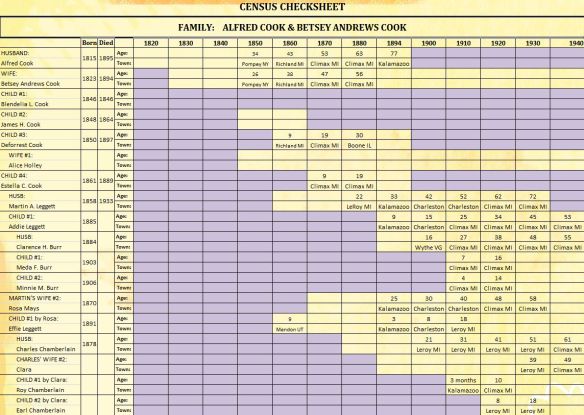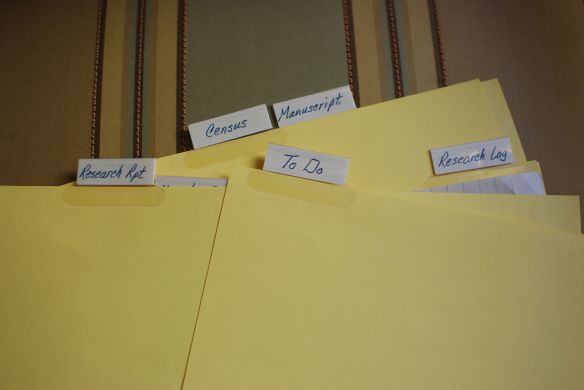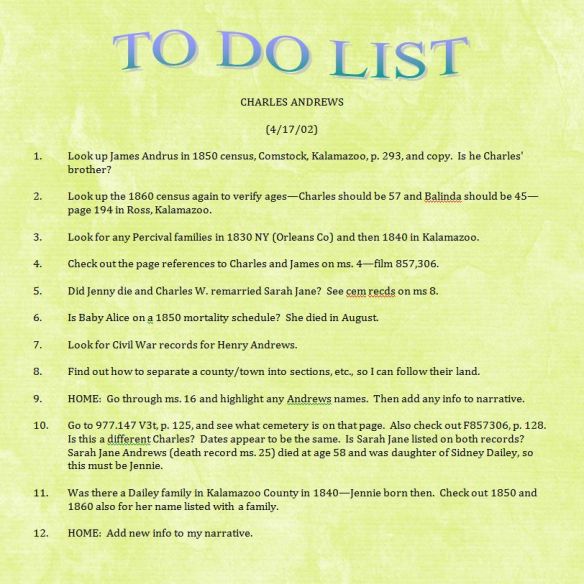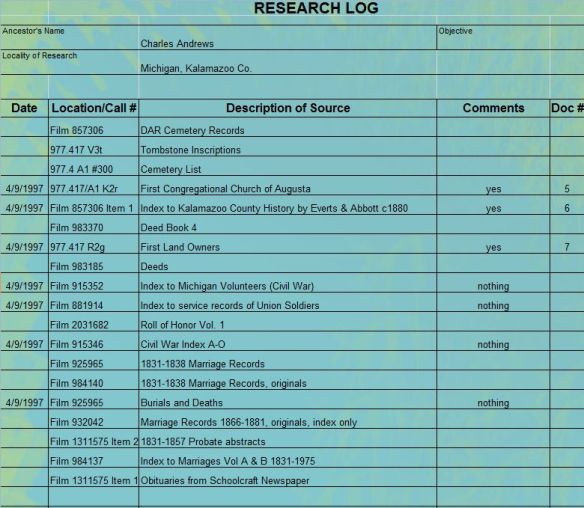ORGANIZING & UTILIZING A GENEALOGY RESEARCH NOTEBOOK
(my favorite use of a 3-ring binder)
I learned about this research notebook from a LDS Family History Consultant, Jayare Roberts. In the 30+ years since I took his class, I have changed this method very little. When I finish research on a family, this essentially provides me with a family history complete with index, sources, and documents.
If you want to research exclusively from your computer and have no need for hard copies, this method is probably not for you. I like to work with hard copies as I research. I transfer the information to the computer when I am finished.
Here’s how it works:
Use a 3-ring binder for each family. If the binder gets too big and you have accumulated a lot of info on the children, separate the children into their own binders. You may also end up with “in-law” binders. Separate the families out as much as needed, but for beginning research keep the family together. Buy a set of ten divider pages with plastic tabs for each notebook. (I often just make my own using old file folders. I can trim them to the size I want and make the divider tabs any size.)
Set up the dividers and put them in the research notebook in this order:
- To Do List
- Research Report
- Maps/Reference Material
- Correspondence
- Chronology/Narrative
- Pedigree Chart
- Family Group Record
- Census
- Research Log
- Manuscript
Here is a description of what goes behind each divider that creates the magic of your research notebook:
- As you think about records you should find or questions you have, jot them down on the To Do List. The next time you research, your To Do List is ready.
2. Every time you perform any research on the family, take a few minutes when you are finished to record what you did. Also record your thoughts, questions, feelings, everything that comes to mind about the family. It is so helpful when you pick up the book the next time, even if it is ten years later. It is also interesting to follow your research journey and becomes a research book of instructions for your posterity.
3. As you accumulate maps of the area or info about the towns and counties, put them in this section for future reference.
4. Correspondence includes letters, emails, posts on genealogy websites, anything that can be considered correspondence between you and another person. I keep these chronological by the person I am corresponding with. I also make sure addresses and phone numbers are recorded here for quick lookup.
5. A simple timeline of the family is a good way to start. As you find more information, the timeline may become more involved. Eventually you may want to turn this timeline into a narrative. I will give you an example of how to do this in a future post.
6. I like to keep a pedigree going both ways, ancestors and descendants, so I can see how this family fits into mine.
7. There are many family group record forms available on the internet. Pick one you like for research purposes. Or print out a blank family group record from your genealogy program. This is a place where you can quickly pencil in the information you find so you can see quickly what you have. Eventually you will want to transfer this information to the genealogy program on your computer.
8. I keep census records separate from the other research and I like them at the beginning of my research because I refer to them so often. I start with a census checklist. I will give you a couple of examples of these in a future post. I then include hard copies of all the census records in chronological order.

One of several census checksheets I have created over the years. I think I’m also addicted to spreadsheets.
9. The research log is the heart, or the magic, of this notebook. This is where you record every record you want to look at and every record you find. You can fill out a research log in advance if you are going to a research library by accessing their online catalog and recording the books and films that may have applicable documents. When you go to the library, your list of items is all ready and you don’t waste precious time accessing the catalog. (You should also use a research log for online research. However, I find this goes so quickly that I really have to discipline myself to write down every website I access.) The research log should contain the name of the record, the call number or film number, the date you looked for it, whether or not you found anything, and the document number you assigned to the records you found. These document numbers are assigned in order, no matter what the document is. If you found the death record first, it is #1. If you found the birth record next, it is #2. If you found a letter written to a cousin, it is #3. This is the beauty of the method – it is simple, quick, and then easy to find the document later. Make sure that you note “nothing” if the record you were looking at contained nothing on your family. This will ensure that you don’t look at the record again.
10. The manuscript section is where you put hard copies of the actual documents you find. If you find the death record first and have assigned it #1, write a “1” in the upper right hand corner of the document and put it behind “Manuscript.” When you find the second document, put a “2” in the upper right hand corner and file it in the notebook next. You can see that eventually you will have a notebook full of records with page numbers on them that will correspond to your index (research log). It is really a genius way of keeping everything accounted for.
By using this method, if your research is interrupted (and it will be), you can pick up your notebook again in six months and begin where you left off. Your research reports will jog your memory. Everything stays nice and neat and you can find any piece of info in seconds. Someone else can even take your notebook to the library and pick up where you left off. I think it’s MAGIC! If I have not made myself clear, please post your questions and I will explain in more detail.





